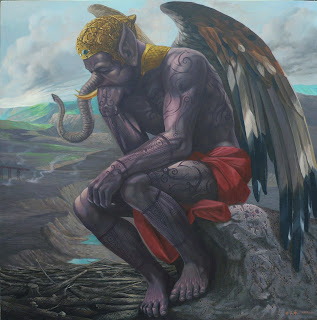Yoo Sun Tai depicts an idiosyncratic universe in which objects shrink down and dimensions combine. Many of the canvases include a toy-like bicycle – crossing a carpet into a painted landscape or becoming belittled by potted plants.
The images are perhaps inspired by a life that has intersected different cultures and an art education that has crossed mediums. “While studying in Germany, and then Paris, I became deeply fascinated with matiere,” recalls the Korean artist. “I tackled both two and three-dimensional art at the same time. I placed wire on paper to explore the disparate qualities of the two materials. I also worked with ink and focused on the black-and-white contrast that is derived from paper and ink.”
Yoo’s paintings blend East and West and old and new in what he describes as a “forest” that provides a fertile environment for ideas to flow into each other. This convergence forms a window onto different perspectives about objects, the spaces they inhabit, and images even without volume, smell or weight – can mirror and influence the world by connecting with memory and perception; but in Speaking & Writing, Yoo’s visual discourse questions the power of words. “What you say disappears the moment it is said,” says Yoo, “but is also final once you say it. Meanwhile, the texts are erasable and rewritable.”









